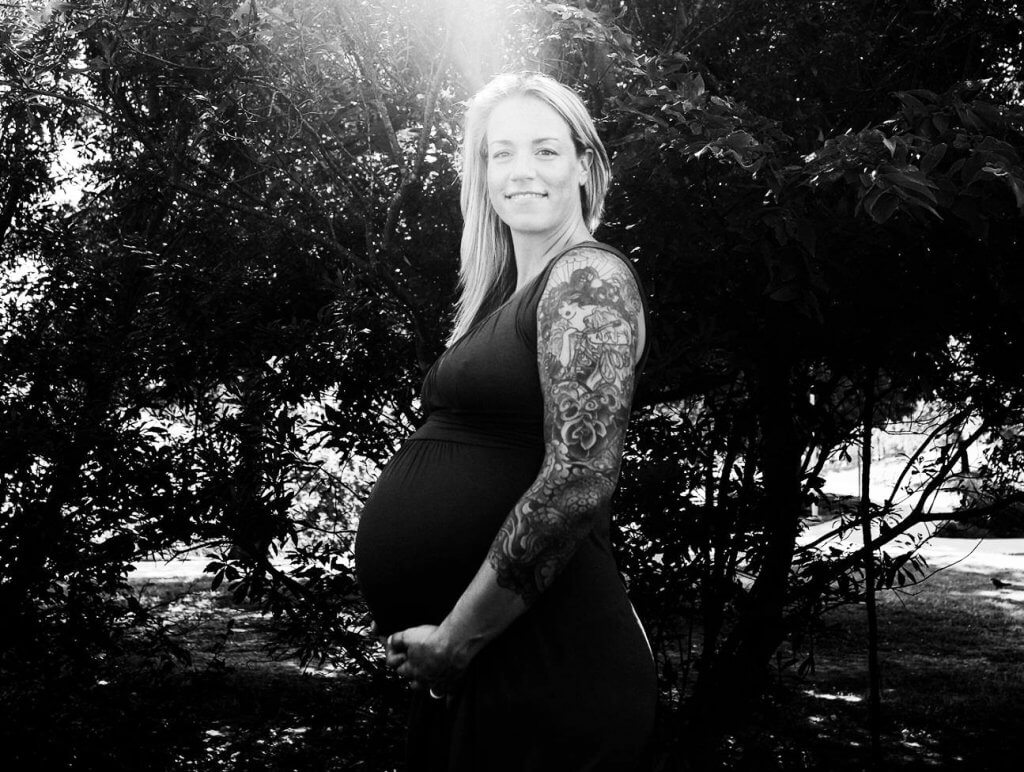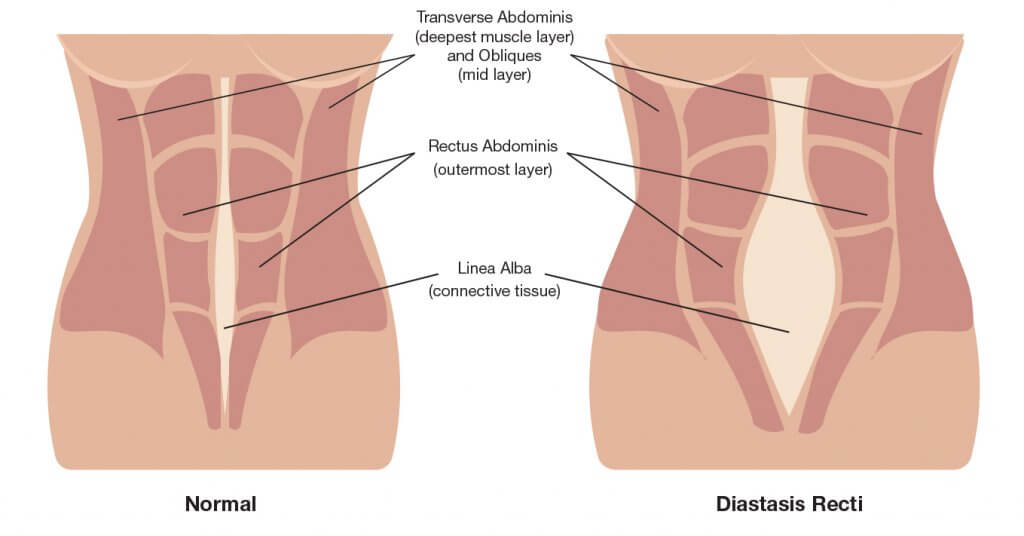
By: Jess Appel, Master Personal Trainer, Crossfit Level 1 Coach, and Mom
Clinically, Diastasis means “separation” and Recti refers to the affected muscles the rectus abdominis. However, you may know the condition as the “Mom Pooch”, “Mommy Tummy”, or “Mom Belly”.
Oh yeah. That. Well, guess what? I’ve got a secret- I’ve got Diastasis Recti and you might too. After two pregnancies, one with twins, and two c-sections, I found myself feeling a little strange about the new look and feel of my abs.
How Does Diastasis Recti Happen?
During pregnancy, the growing uterus stretches the muscles in the abdomen. This can cause the two parallel bands of muscles in the abdomen to separate, which leads to that little bit of extra love. This separation of the abs isn’t just an aesthetic concern- it can cause back pain and digestive issues.

Diastasis Recti is Really Common
Ninety-eight percent of women experience ab separation immediately postpartum, but up to two-thirds of women continue to suffer and most won’t realize it until years later. Despite its prevalence, the body of research on Diastasis is limited, and it’s not usually a trending topic on most Instagram feeds.
Six Weeks PostPartum: May Not Be Enough
Even physicians can brush off the importance and impact of diastasis for new and recovering moms. In my own pregnancies, I was cleared to return to CrossFit activity at the “normal” postpartum time frame. However, it only took a workout to conclude that something was amiss. Over time, I’ve met moms with similar experiences and still suffered even years after childbirth, and I decided to bridge the gap between health care and fitness. My goal is to help all new moms develop their intuitive sense of their bodies, to retrain and connect to the deep core muscles, and to avoid common exercises that can exacerbate Diastasis Recti.
Symptoms of Ab Separation
- Coning along the midline of the abdominal region while engaging the abs (pregnant or postpartum)
- A distended stomach even after losing the baby weight
- Stubborn abdominal fat
- Chronic back pain
- Feelings of chronic bloating or gastrointestinal issues
The Bad News: If you find yourself with any of the symptoms listed above, it’s likely you have a certain degree of diastasis on your abdominal muscles.
The Good News: Separation can be healed by following a focused protocol to strengthen and connect to the pelvic floor.
How to Heal Diastasis Recti
Movements to Avoid
| Movements to Aid in Repair
|
Connect with Jessica to learn the techniques to treat this common condition!
 Jess is excited by fitness because of its ability to truly transform lives. Carefully building a physically strong, well-fed body changes the way you feel and interact with the world. After 15 years in the fitness industry, Jess has witnessed and directed a multitude of physical transformations and is an expert at helping clientele break through plateaus. Not only will Jess transform your physique and ignite your metabolic engine, but she will also radically revolutionize the way you feel in your body. Jess is a mother of three and has healed her own diastasis.
Jess is excited by fitness because of its ability to truly transform lives. Carefully building a physically strong, well-fed body changes the way you feel and interact with the world. After 15 years in the fitness industry, Jess has witnessed and directed a multitude of physical transformations and is an expert at helping clientele break through plateaus. Not only will Jess transform your physique and ignite your metabolic engine, but she will also radically revolutionize the way you feel in your body. Jess is a mother of three and has healed her own diastasis.
Hello my name is Andrea. I am a mother of 6. I recently was diagnosed with diastisis recti. Can you please help me with healing this so that I can get back to seeing my feet (lol).
Hi Andrea!
We definitely recommend you get in touch with Jess for training sessions. She can teach you techniques and exercises that will address and heal your Diastasis Recti. You can reach out to her or book your first session with her here!